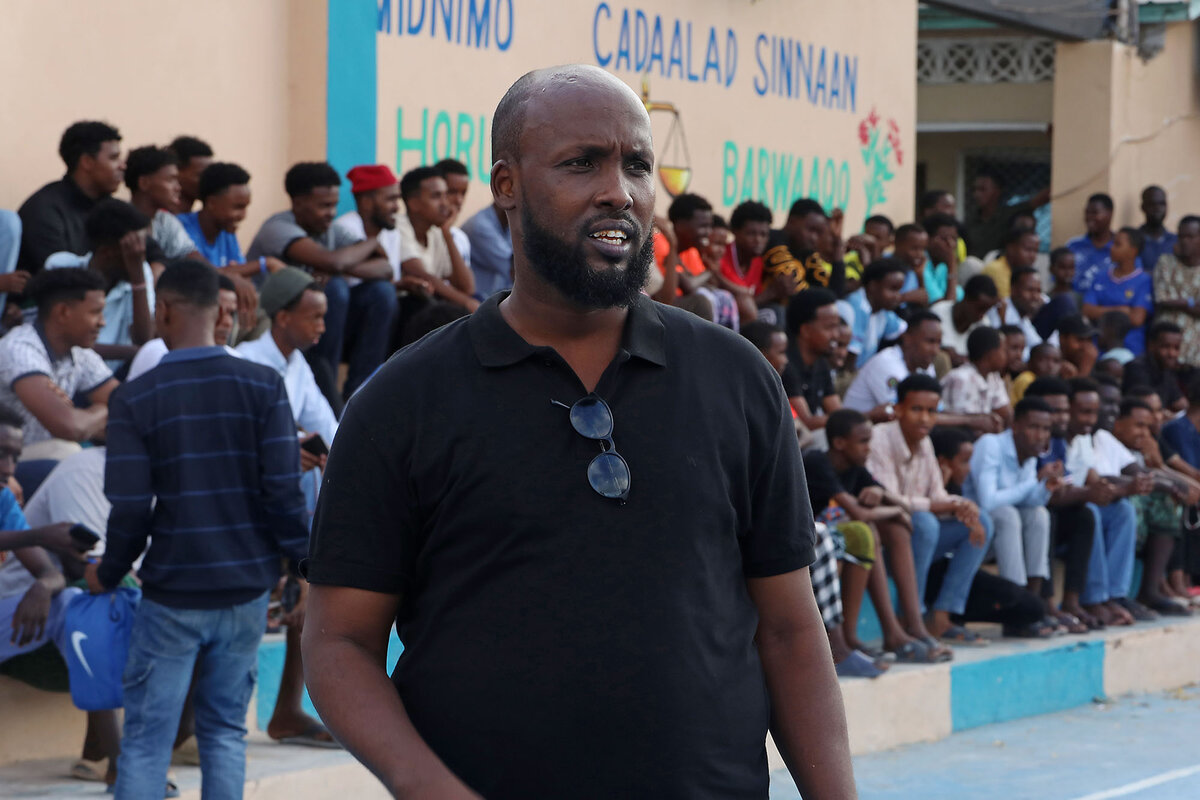In a small stadium tucked behind bullet-scarred buildings in the Somali capital, an intense game of soccer is underway.
The crowd roars as Sayid Ali feints, spinning past an opponent for a breakaway. His fancy footwork is all the more remarkable given the fact that he is doing it all on only one leg.
Mr. Ali, like all of the players on the pitch, is an amputee. He lost his right leg four years ago when he was hit by a stray bullet in a gunfight between Somali forces and Al Shabab militants not far from the stadium where he plays now.
For the last quarter century, Somalia has been at war with itself. Long-running clan conflicts and fighting between the government and Islamist militants have left a devastating imprint on society. Today, the country has an estimated 2 million people living with disabilities – more than 10% of the population – including many who have lost limbs in explosions and other attacks.
Survivors often live in despair and isolation. Before Mr. Ali lost his leg, for instance, he was one of the best soccer players at his school, and dreamed of going pro. Afterward, he assumed he would never play his beloved sport again. That is, until a neighbor told him about amputee soccer, a game purpose-built for his changed body.
In recent years, dozens of other amputees here have had the same experience, finding joy and community in the sport. It gives them a space to come together and alleviate their traumas, and to “rediscover ... their former selves,” says Gedi Saciid, a psychologist and amputee soccer fan.
Playing by new rules
Two years ago, Abdiaziz Kediye, a former player in the Somali Premier League, traveled with a Somali team to a tournament in Tanzania. There, he saw a group of amputees playing soccer, and immediately, the sport piqued his interest. His own soccer career had come to an end in 2011 when he was badly wounded in a firefight between the army and Islamist militants. So many Somali athletes had been wounded this way, he knew, and many had lost limbs. Amputee soccer could be their second chance.

When Mr. Kediye returned home, he recruited Abshir Ali Shiimeey, an amputee and a passionate football fan, and together, the two men set about starting their own league in Somalia.
Amputee soccer looks a lot like regular soccer, with the difficulty level cranked up to 10. Players dribble, pass, and sprint down a basketball-sized field on their crutches – no prosthetic limbs allowed. “Outfielders may have two hands but only one foot,” state the World Amputee Football Federation’s official rules. “Goalies may have two legs, but only one hand.”
But strict though the rules are around who can play, players say the sport often frees them from thinking about their disability. “When I have the ball, my enthusiasm for the game makes me forget that I have lost a leg,” says defender Abdi Mohamed, who was wounded in a roadside bombing 10 years ago.
For referee Hussein Abdalla, amputee soccer has been a way for him to return to a sport he loved. Before he lost his leg in an explosion, he dreamed of playing for Somalia’s national soccer team. “Like everyone, I had big ambitions in life,” he says. “Unfortunately that hope was shattered.”
Then amputee soccer gave him a second chance with the sport, and a new community of people who understood exactly what he has been through. They have been through it, too.











-1.png)


